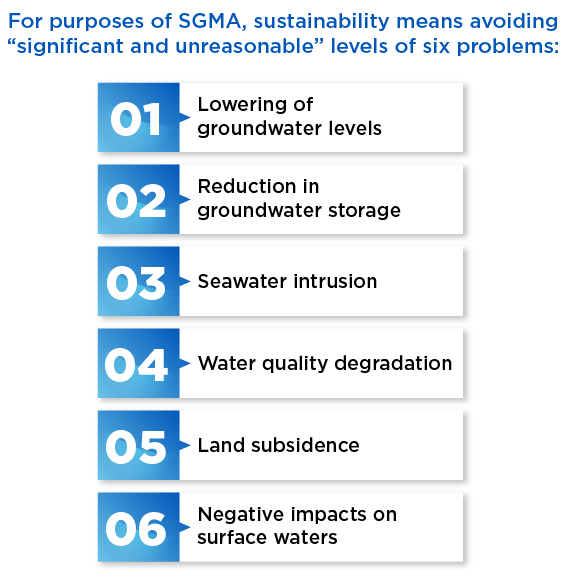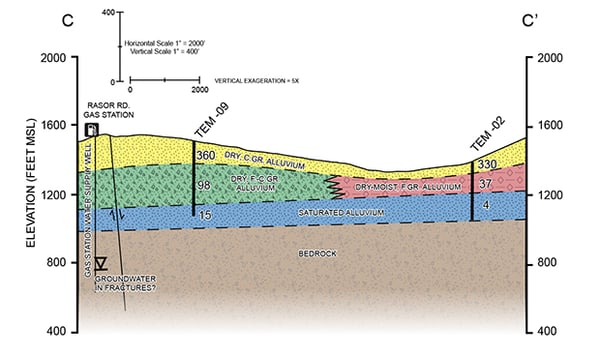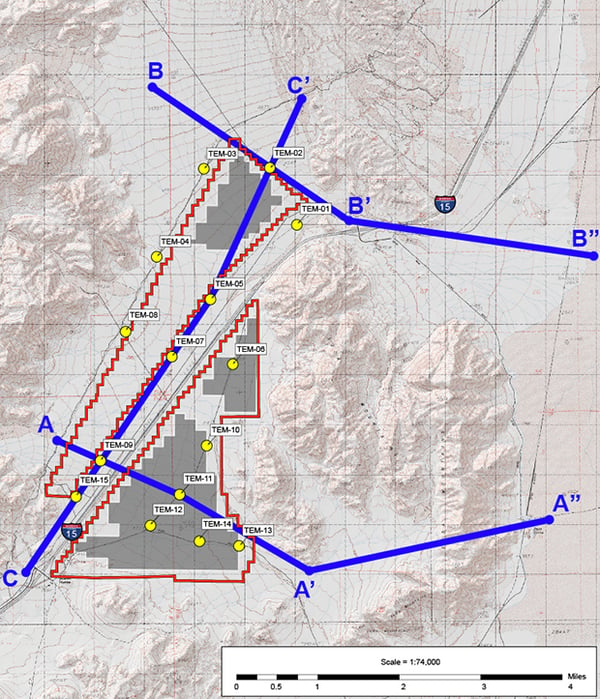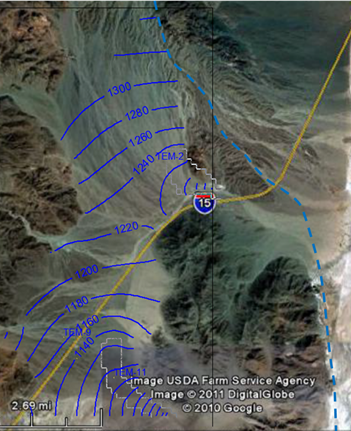There’s nothing quite as motivational as a looming deadline. The drip-drip-drip of days passing is absorbed by the growing roar of an imminent wave of crashing water.
This is the situation in which a great number of groundwater basins in California find themselves. A revolutionary trio of legislative actions, collectively known as the Sustainable Groundwater Management Act (SGMA), imposed a significant rethink upon groundwater management when it was passed in 2014.
Much time has been spent since then considering how to address its requirements, but hard deadlines are rapidly approaching. For the medium- and high-priority basins in a high state of overdraft, they must define a sustainability plan by Jan. 31, 2020. The remaining medium- and high-priority basins have until 2022.
With the calendar well into 2019, the time for action is imminent.
What Is SGMA?
The state of California has over 500 identified groundwater basins, 134 of which — representing 96 percent of groundwater use in the state — are subject to SGMA regulation. These basins have been prioritized, based on a combination of their locations and existing impacts on the groundwater supply. Many of the most impacted basins are either in the Los Angeles area or scattered along the prime agricultural land of the Central Valley.
Unlike surface water, groundwater has not been subject to significant management measures until now. Although groundwater use was adjudicated in critical, highly populated areas, most groundwater basins were largely open to use on a first-come, first-served basis under the previous hands-off approach. Recurring drought cycles and dramatic increases in usage have resulted in significant declines in the water table. This strain on resources and land quality is having serious ramifications. SGMA aims to address this by establishing sustainable practices for the long term, balancing inputs and outputs of water for those basins.

Under the act, regulated basins must form groundwater sustainability agencies (GSA), a quasi-governmental body. The state water board would step in if local agencies are unwilling or unable to respond, charging water users for their management service. Either way, the GSA must develop a groundwater sustainability plan for its basin to “provide a buffer against drought and climate change.” Groundwater sustainability must be achieved 20 years after the plan is adopted.
It’s a tall order. The right tools and knowledge can make a significant difference.
The Foundations of Planning
On a practical level, what does compliance entail? Groundwater sustainability plans depend on the accuracy of their underlying hydrogeologic conceptual model. The groundwater basin is a direct function of the region’s subsurface geology. If you understand the geology, you can more accurately define the hydrogeologic framework.
A basinwide numerical groundwater flow model incorporates a conceptual model of the site that is geology-based. It also includes all aspects of the water budget, incorporating precipitation, runoff, flow to and from surface water, infiltration, pumping wells, and evaporation; the water budget and flow model must have accurate accounting to manage the groundwater effectively.
Achieving the level of detail and accuracy needed takes a tremendous amount of data compilation and incorporation with geographic information systems (GIS) into databases, which must be accessed and analyzed appropriately.
Some of my Burns & McDonnell colleagues are pioneering Environmental Sequence Stratigraphy (ESS), which leverages existing data to develop a highly detailed geology framework of the subsurface. Where the current subsurface models of aquifers are insufficient, the ESS approach makes it possible to develop accurate cross-sections and maps of the subsurface to guide a more representative groundwater model.
Groundwater Modeling
The better we understand the underlying geology, the more accurate the groundwater models can be.
A numerical groundwater flow model is an effective tool for evaluating all components of the groundwater system — including recharge, surface water inflow/outflow and pumping — and how these parameters interact over the entire basin. Three-dimensional numerical models calibrated against actual measurements and tested against major stresses such as droughts can provide accurate predictions for future events such as increased pumping or climate change. A well-calibrated model also can be used to test the potential benefits of various sustainability options, such as stormwater infiltration basins or saltwater intrusion barriers.
That is what makes sustainable groundwater management possible and effective.



The groundwater modeling above was performed for a confidential project in a sensitive desert area. The modeling was conducted to test whether limited groundwater production in the desert valley would result in a significant impact to sensitive ecosystems. The findings from this model — along with aquifer testing — were instrumental in showing that the project could progress without causing significant impacts.
Selling the Science
Stakeholder engagement is another critical element to successful GSA efforts to address SGMA requirements. A robust stakeholder engagement campaign will help align public interests with project objectives. As GSAs begin examining local challenges and making recommendations as part of their long-term plans, it will be vital to have clear communication with the public about any difficult choices for the future.
For example, the GSA in Indian Wells, near Palm Springs, has concluded that the majority of agricultural land use within its basin must end because the necessary irrigation simply is not sustainable. That staggering conclusion will have an enormous economic impact on a lot of people. The ability to substantiate and explain the science behind decisions like that is essential to ultimately achieve public acceptance.
The California Assembly recognized that a sea change was needed in how groundwater is used and managed in challenging times. SGMA offers a constructive path forward, based on localized decision-making, and funding through Proposition 1 is providing $100 million from the state for development of the groundwater sustainability plans. Now it’s up to the GSAs to develop their plans, by first establishing the necessary understanding of their basin hydrogeology. It can be done, but time is running short.
Superior understanding of geology and hydrogeology, combined with an unconventional funding approach, enabled an innovative solution to a remediation challenge in Newport Beach’s Big Canyon Creek watershed.

